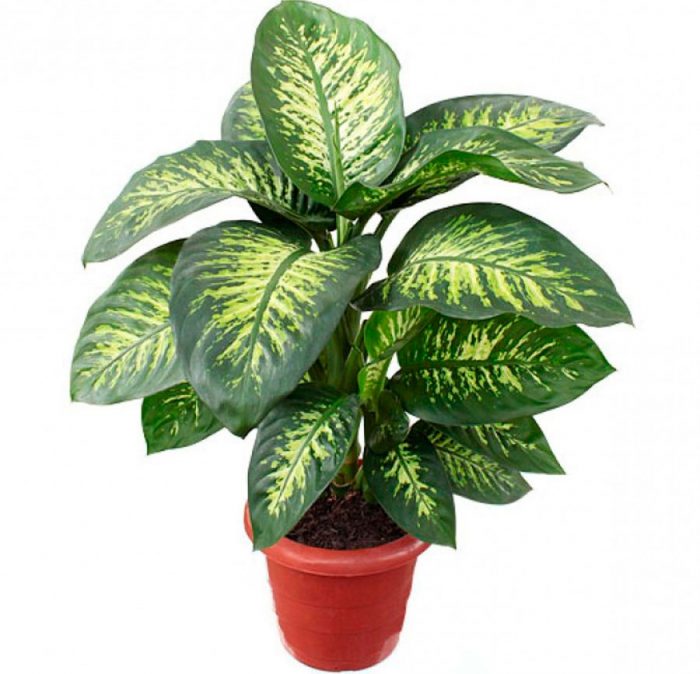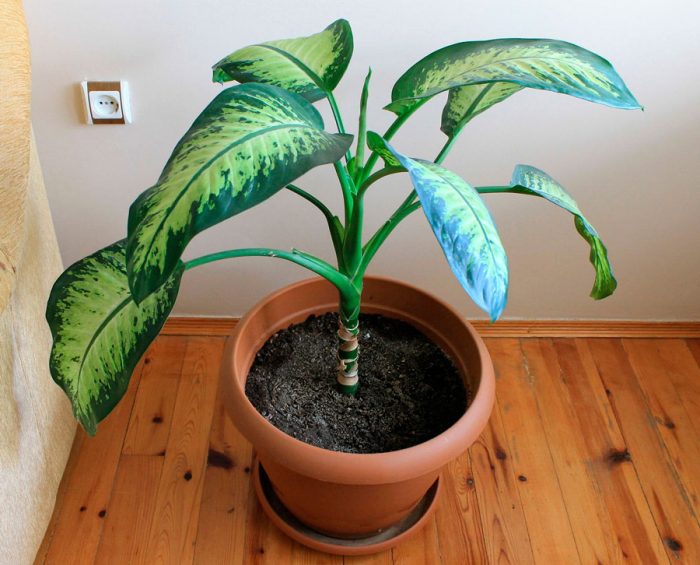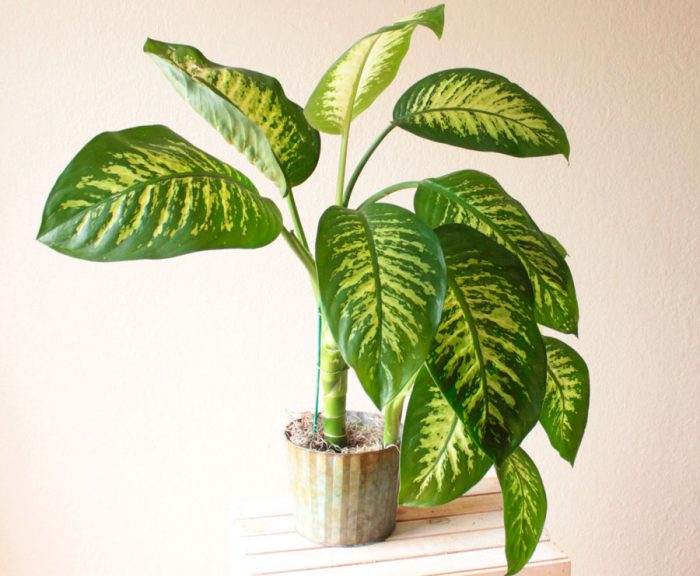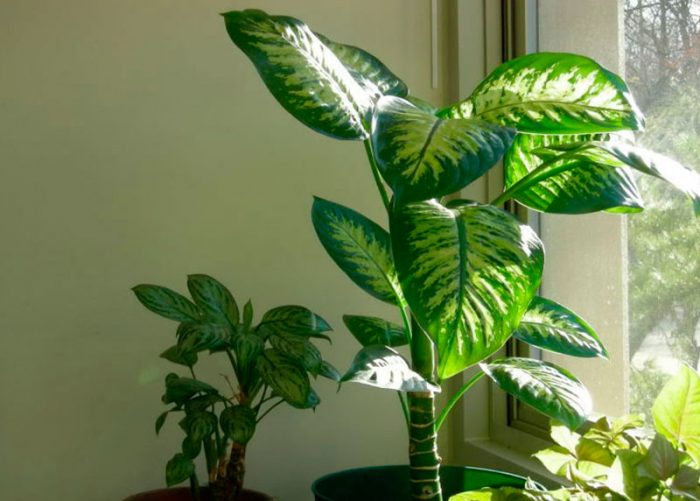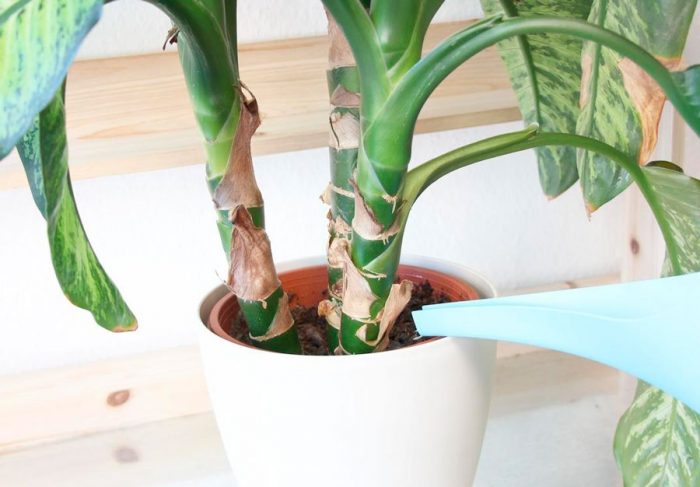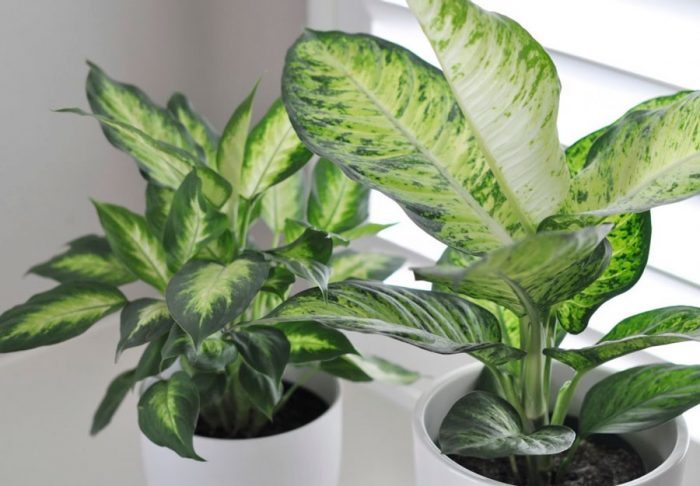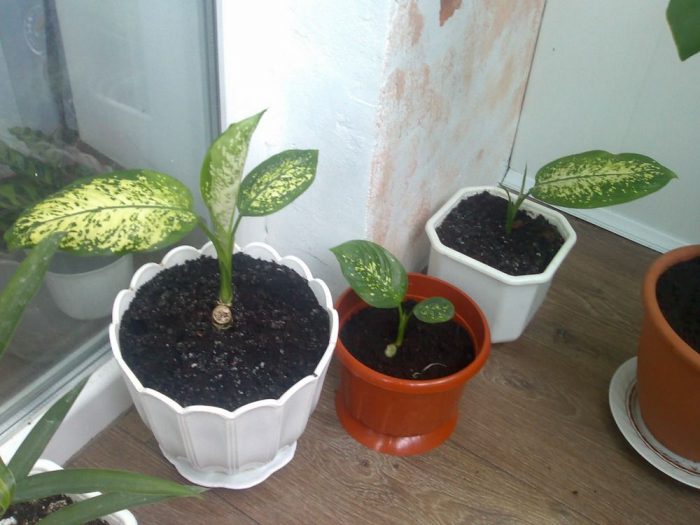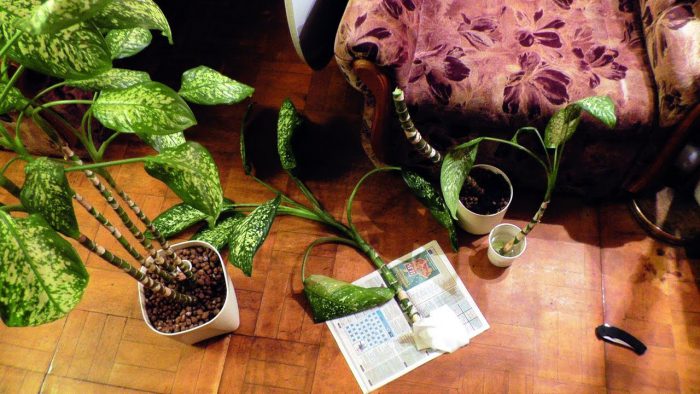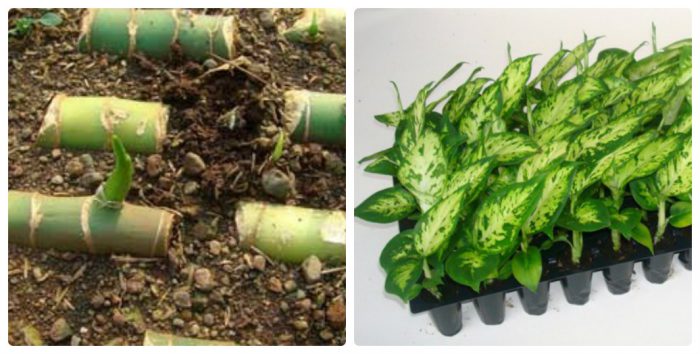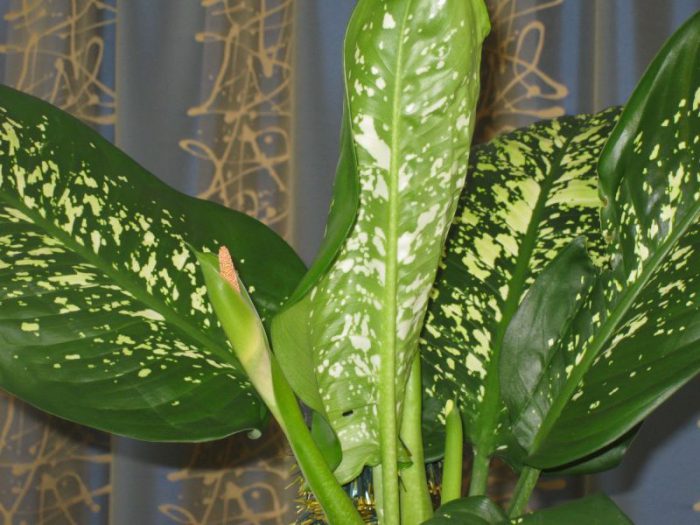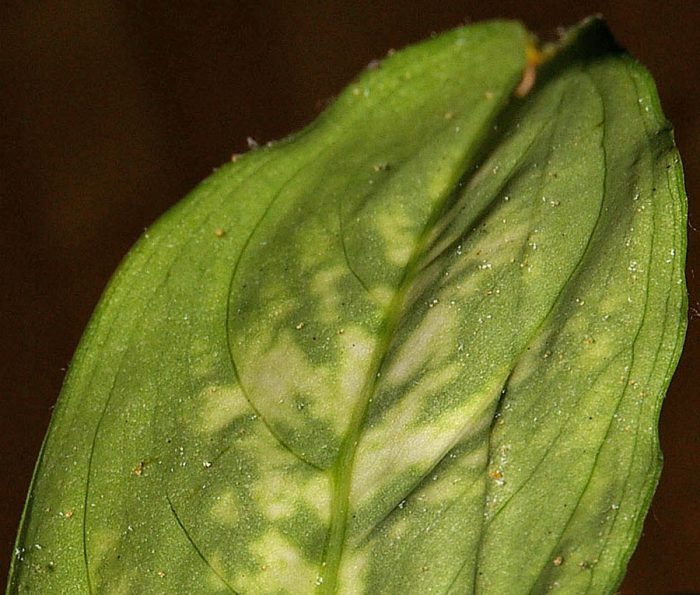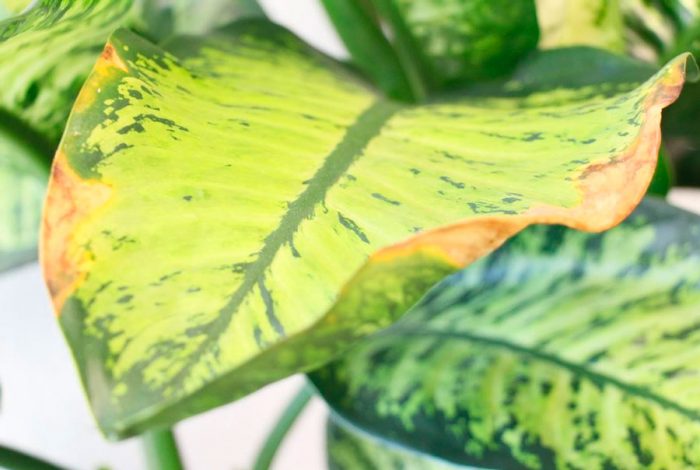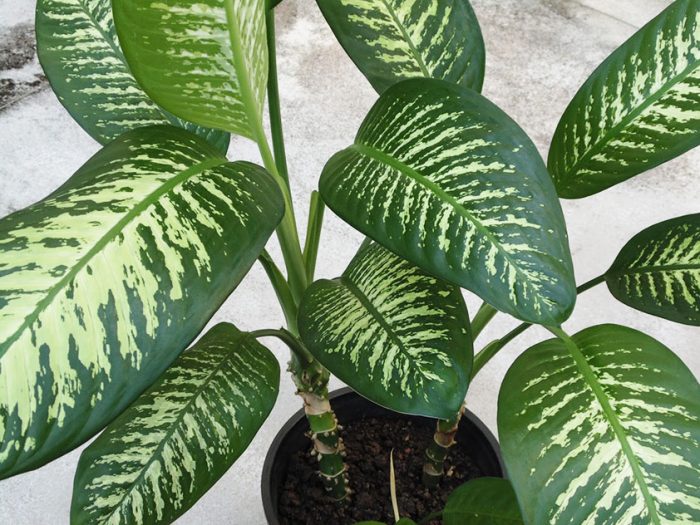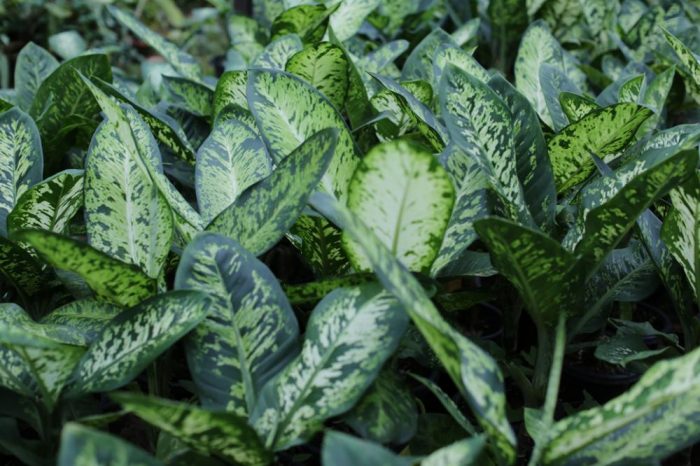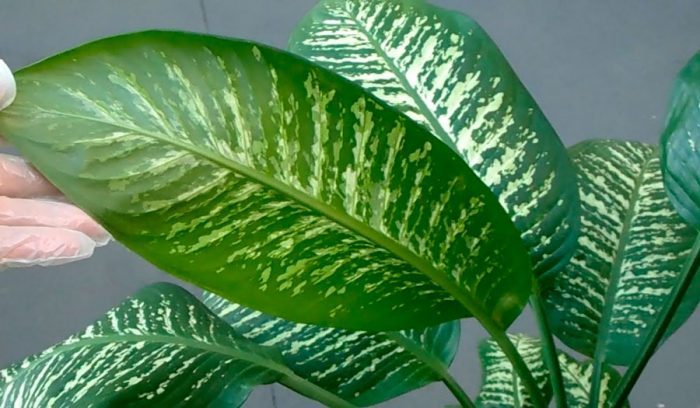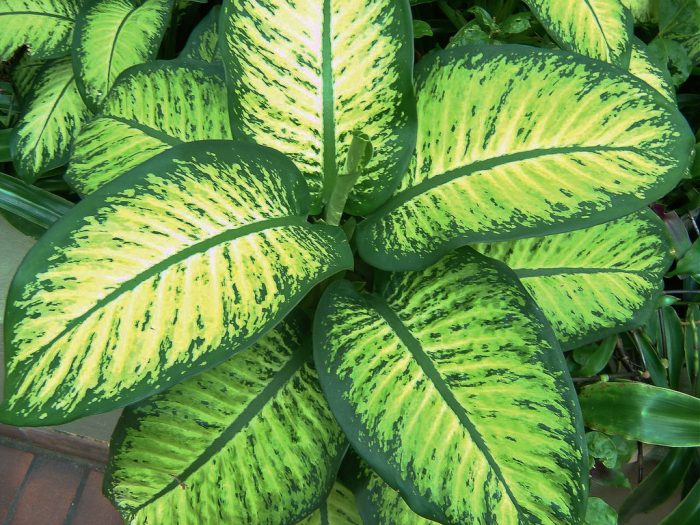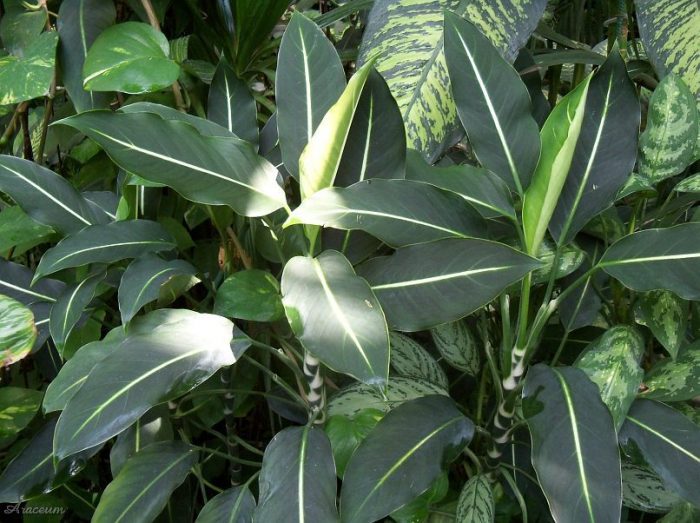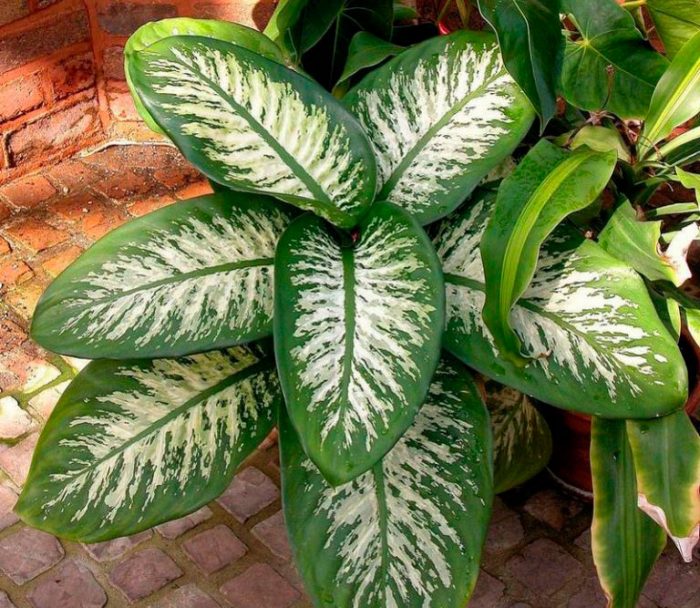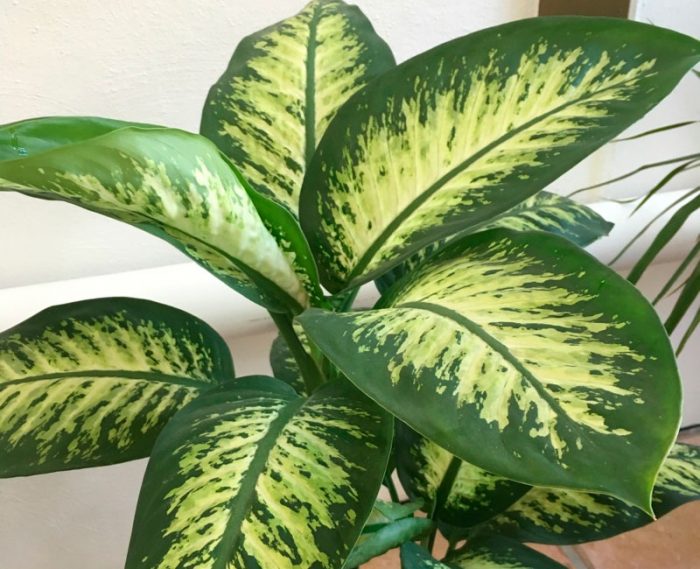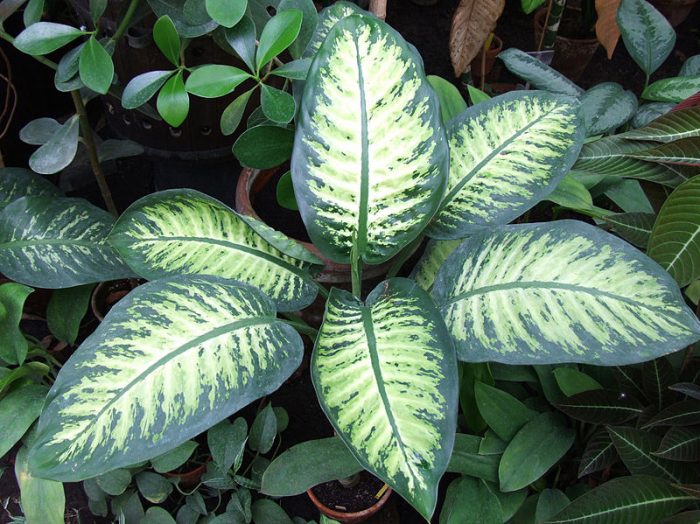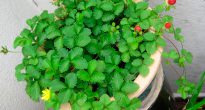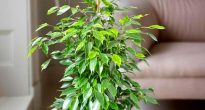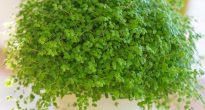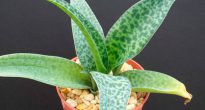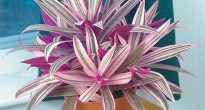A very popular houseplant that grows wild in South America is called Dieffenbachia. It was named after JF Dieffenbach, a botanist from Germany, and it belongs to the aroid family.
Its variegated leaves of a fairly large size look quite impressive. And they are located on stems similar to the trunks of small trees, which are quite thick and juicy. The growth rate of this plant is quite high and it looks more than impressive, which is why it is often used to decorate insulated balconies, living rooms, warm verandas, and so on.
Dieffenbachia has enough poisonous juice, which stands out when there is damage to the stem or leaves. If it gets on the mucous membrane (nose, mouth, eyes), it can cause significant burns. Because of this significant feature, the plant not recommended for use in rooms with small children.
It is very simple to grow this plant, and even a person who is just mastering the basics of floriculture can easily cope with this task. The thing is that it is not demanding in care and is unpretentious. However, it should be borne in mind that with an excess of moisture in the soil, rotting of the stem may begin.
A feature of this plant is that it grows from the top, while the leaves are gradually dying off from the bottom. In this regard, it will soon enough become like a broom on a stick or a tree and there will be no trace of a spectacular rather lush bush. Its trunk can grow up to several meters in height, but despite its thickness, it is quite fragile. Therefore, it may happen that it simply breaks due to a strong concussion or under its own weight. However, there is nothing wrong with that. This is a completely natural process for dieffenbachia. All you have to do is trim off the top of it and then root it. You can also cut the stem into pieces and root them. As a result, you will have many young plants of this species.
However, there are species that can bush. They have dormant buds on the trunk, and sometimes it happens that they wake up, and due to this, new shoots are formed.
Dieffenbachia bloom - This is a rather rare occurrence if it grows at home. However, thanks to artificial pollination, it can also produce fruits. If this plant is satisfied with the environment and care for it, then flowers bloom on it every year. After it starts the process of drying a flower, it should be removed... The fact is that seeds begin to form in it, and this process takes a large amount of energy from the plant.
Content
- 1 Dieffenbachia care at home
- 2 Types of dieffenbachia with photos and names
- 2.1 Variegated, or painted (Dieffenbachia picta)
- 2.2 Spotted, or painted (Dieffenbachia maculata)
- 2.3 Leopold (Dieffenbachia leipoldii Bull)
- 2.4 Pretty, or pleasant (Dieffenbachia amoena)
- 2.5 Seguina (Dieffenbachia seguina)
- 2.6 Oersted (Dieffenbachia oerstedii)
- 2.7 Magnificent (Dieffenbachia magnifica)
- 2.8 Large-leaved (Dieffenbachia Macrophylla)
- 2.9 Baumann (Dieffenbachia bowmannii)
- 2.10 Bause (Dieffenbachia bausei)
Dieffenbachia care at home
As mentioned above, Dieffenbachia grows wild in South America, namely in tropical forests, where it is very warm and humid. In this regard, these plants are very light and heat-loving. And they do not tolerate drafts very well.
Illumination
Feels great on a bright window, but it should be borne in mind that Dieffenbachia does not like direct sunlight. If the open balcony is located on the south side, then this plant should not be put there for the summer.
In the event that he does not have enough light, his stem will stretch out in the shortest possible time and become very fragile and very thin, and only a few leaves will flaunt at the top.
How to water
When the plant begins to grow actively, it should be watered abundantly. However, in winter, watering needs to be significantly reduced. Waterlogging of the soil should not be allowed. Watering is carried out only after the soil dries out at least a couple of centimeters deep. To check, you can use a special soil moisture meter or check with your finger.
What should be the humidity
The humidity in the room where this plant is located should be high enough. The fact is that in the homeland of dieffenbachia there is always high humidity. In this regard, the leaves should be sprayed, as often as possible, with plain clean water, and this is especially true in winter, when the air is greatly dried out by heating devices and batteries. A sign that the humidity is lower than necessary is dry leaf edges.
Indoor temperature
The room should be at least 17 degrees. It should be remembered that in the autumn-winter period, when it becomes very cold outside, in no case should you open the vents.
The soil
In order for the plant to grow and develop well, it must be planted in the right soil... To do this, you need to make the following earthen mixture: turf soil + sand + peat soil + leafy soil, they are taken in a ratio of 4: 1: 1: 1. Don't forget drainage. It is also quite possible to add brick chips or charcoal to the soil.
Features of feeding
When dieffenbachia begins to grow actively, it should be fed quite often, or rather, once every 14 days. Complex fertilization is perfect for this. Also, this plant reacts extremely positively to feeding with nitrogen-containing organic matter.
Reproduction
Most often, the reproduction of this unusually beautiful plant is produced by apical stem cuttings. For rooting, you can use sand, water, or a mixture of 1 part peat with 1 part sand. You will need Kornevin. The lower part of the cutting should be dipped in it before rooting. It is advisable to cover the top with a glass transparent jar or film. For the cutting, you should choose a place where it is light and warm enough, but it should be taken into account that the direct rays of the sun do not fall on the leaves. The soil should be constantly slightly moistened (not wet). Once every 7 days, when watering, you should put a drug in the water that promotes early rooting, for example, Zircon, Ekogel, Kornevin, Heteroauxin, Kornerost. As a result, the roots will appear much faster. To speed up rooting, it is necessary to spray the cutting as often as possible, and care must be taken to temperature the substrate was at least 21-23 degrees. It is highly undesirable to place the plant on a cold windowsill.
In the event that the cutting takes root in water, and its roots already reach at least 3 centimeters in length, feel free to plant the plant in the soil. If sand is used instead of water, then the cuttings should be fed with mineral fertilizer, or rather, with a weak solution from it (a quarter of the prescribed dose will be enough). The transplant should be done only after the roots have grown very well. It is necessary to transplant carefully together with a lump of the substrate so as not to violate the integrity of the root system.
Dieffenbachia also reproduces well enough in pieces of the stem. To do this, it should be cut into cuttings, the length of which will be approximately equal to 10–20 centimeters, and they should have 3-4 internodes. Let them dry for 24–48 hours before planting. Do not forget to sprinkle the slices with charcoal or sulfur. Then they must be put in the substrate (they should be in a horizontal position) and slightly pressed into the ground so that it covers the cuttings by ½ part.
You should not count on a quick result. The formation of roots, and even more so of shoots, is extremely slow, and this can take from several weeks to 6 months. In the case when the shoots do not appear for a very long time, but at the same time the cutting itself does not rot, it should be further watered moderately. The fact is that the rooting process has already begun. After a while, you will see that a bud has appeared near the soil. And a leaf will already begin to grow from it, and at this time it is important to pour quite a bit of soil to the base of the shoot. After the plant becomes much stronger, a transplant should be made. However, do not forget that in this case it is impossible to remove the old trunk, otherwise the plant will rot. The old dieffenbachia, in which both the top and the trunk were cut off, should not be thrown away. If you leave at least 3 internodes on the hemp, then very soon new shoots with leaves will begin to grow.
You can also propagate the plant using seeds. But to get them, you will need to manually pollinate the flowers. On the cob of the plant are both male flowers (at the top) and female (at the very bottom). Women's flowers are always covered with the lower part of the bedspread. You will need to carefully cut the coverlet (the incision should be longitudinal), take the pollen from the same inflorescence with a brush and carefully introduce it into the flower. Then, use regular tape to seal the cut.
Flowering continues for several days. Then the flower fades, but does not fall off for a very long time. If you did everything correctly, and the flower was pollinated, then orange or red berries should form in its place, but you just need to remember that they are poisonous. The fruit will ripen in about six months. This can be understood when his shell wrinkles. After pulling out the seeds, they should be sown immediately, and chopped sphagnum moss is best used as a substrate.
Transplant features
The transplant is carried out in the spring months and only if necessary. A mixture of sand, peat, leafy earth and humus is prepared in advance. Or you can take a universal soil for fruit-deciduous plants. Take a larger pot than the previous one, and deepen the stem during transplanting. This will encourage the growth of new roots.
Carefully remove the earthen ball from the old pot. Examine the roots carefully. If they are completely healthy, then they can be placed in a pot along with the old soil. Don't forget the drainage layer. To do this, pour a little expanded clay on the bottom. Then it will be necessary to add a small amount of fresh soil, and add it to the sides of the plant, slightly compacting. It should be borne in mind that the soil during transplantation must be moistened (not wet). Very often, damaged roots rot. Add a rooting agent of your choice (Kornerost, Heteroauxin, Kornevin, Zircon) to the water while watering.
In the event that there are rotten roots, then they should be carefully removed during transplantation, having previously shaken off the soil. Sprinkle the slices with a powder made from activated carbon. You can wait until they dry. The plant can then be planted in a new pot.
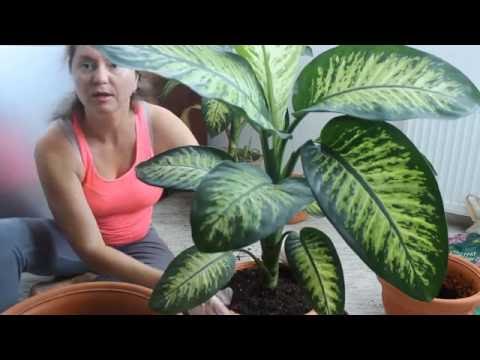

Watch this video on YouTube
Pests
Dieffenbachia may show spider mite (there is a spider web on the stems and leaves), a false shield or shield (the appearance of brown plaques with sticky secretions), and also a mealy mite (a cotton-like white fluff appears).
Dilute actellic, taking 1–2 grams of the product per liter of water, and treat the plant with it. Soapy solution and warm washing will also work.
Diseases
A disease such as rot is very common among dieffenbachia. And it arises because of abundant watering. In the event that the plant begins to wither, leaves fall off, and the soil does not dry out even with rare watering - this is a reason to check the root system for rot. Remove soil and then rot from damaged roots. Sprinkle the slices with activated carbon powder (cinnamon or potassium manganese).
Spill the new soil with a small amount of a weak solution of potassium permanganate. Reduce the amount of watering, and you need to do them only after the topsoil dries out a couple of centimeters.
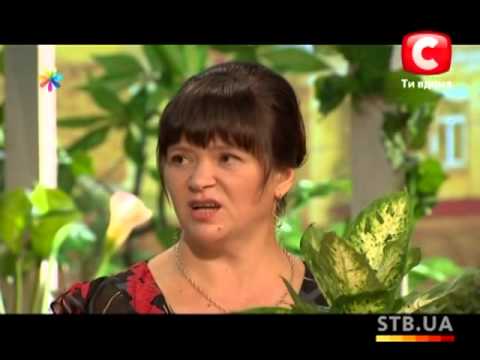

Watch this video on YouTube
Types of dieffenbachia with photos and names
Variegated, or painted (Dieffenbachia picta)
This is one of the most popular species in home floriculture. Many people like him for his large dimensions. Mature plants can easily grow to a height of 2 meters. It seems that these plants have just come from a photograph of a rainforest. Effect and greenery of the plant: bright green oval-shaped leaves are decorated with an intricate pattern of their stripes and specks of white. Their leaf plate is long - about 40 cm or more, and wide - 15 cm.
Spotted, or painted (Dieffenbachia maculata)
This variety does not lag behind in popularity from painted dieffenbachia. It differs from it in height - it is shorter, its height does not exceed a meter. It is an attractive ornamental plant that will bring vibrant exotic colors to any space, be it a room or an office. Its spreading oblong leaves, slightly pointed at the tips, reach a length of 45-50 cm, and their width is no more than 13 cm. An asymmetric ornament flaunts on their surface: on a green background (it can be dark or light), many white ones are scattered in a chaotic manner and yellow spots, and more than a dozen lateral veins.
Leopold (Dieffenbachia leipoldii Bull)
Rarely found in amateur floriculture, a variety from the jungle of Costa Rica, which has a unique exotic look. A distinctive feature of Leopolda is a very short (5 cm) and thick (2 cm) barrel. The wide elliptical leaves are dark green, the midrib stands out due to its white color. The petioles are so short that it is difficult to see them, pale green, purple specks.
Pretty, or pleasant (Dieffenbachia amoena)
Another species, extremely uncaring in the conditions of keeping at home. Unlike its more demanding relatives, it tolerates a lack of moisture, so its attractiveness will not suffer in the winter when the heating is on. It is enough just to make sure that the soil does not dry out. Flower growers like it for its height - up to 1.5 meters, and wide - up to 60 cm dark green leaves, which are pierced with veins with white stripes.
Seguina (Dieffenbachia seguina)
It is very similar to spotted dieffenbachia, but differs from it in wider leaves on shortened petioles and fewer side veins (from 9 to 12 cm). This is a bush species that has managed to take an active part in breeding.For example, Seguina is the parent of the spectacular and widespread Green Magic, which has a uniform dark green leaf blade with a prominent white vein in the middle.
Oersted (Dieffenbachia oerstedii)
A species with large green leaves. They have a pointed shape, with a clearly visible vein in the middle of the leaf plate. Its length is usually about 35 cm.
Magnificent (Dieffenbachia magnifica)
Another variegated dieffenbachia, decorated with white dots, which are located both on the leaves themselves and on the petioles. It looks very nice, so the second name of the species is Royal (Rex).
Large-leaved (Dieffenbachia Macrophylla)
Grows up to 1 meter in height. Its wide leaves are ovoid (which is logical to assume, following from the name) of a solid green color. The central vein is thickened.
Baumann (Dieffenbachia bowmannii)
An attractive variegated species, which differs from other indoor dieffenbachia in unusually large leaves, the length of which, with proper care and creation of suitable conditions, reaches 70-80 cm. This is a record among these plants grown at home. The color of the leaf plate is dark green with small light spots.
Bause (Dieffenbachia bausei)
This species is prized for its high aesthetic qualities. Relatively small leaves, not exceeding 40 cm, green with a yellowish tint. They are decorated with white and dark spots.

